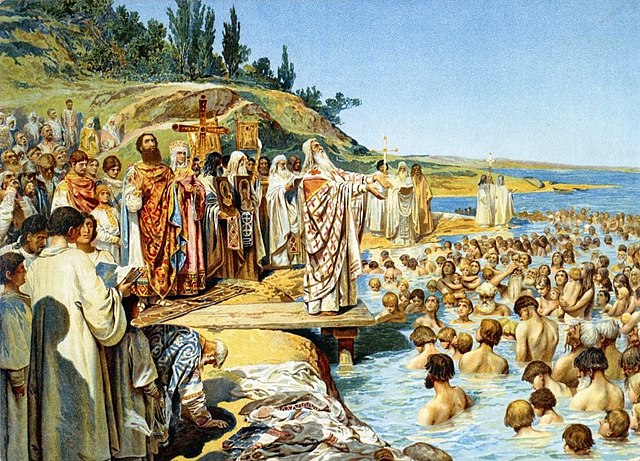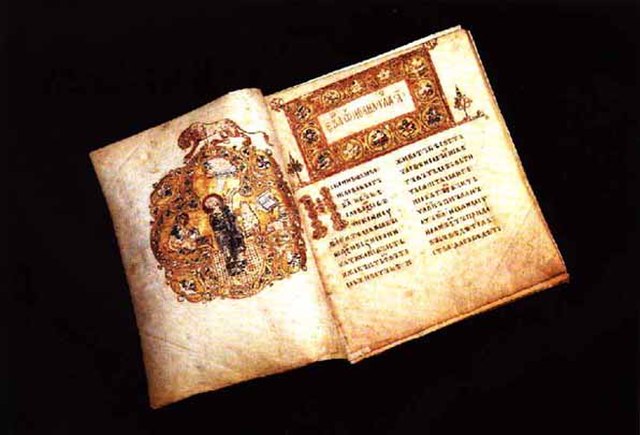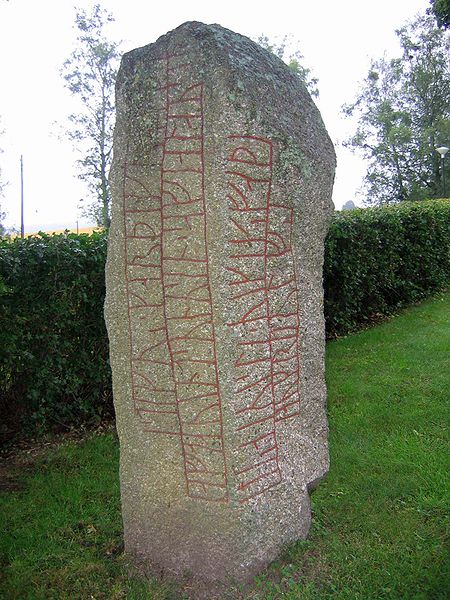Christianization of Kievan Rus'
The Christianization of Kievan Rus' was a long and complicated process that took place in several stages. In 867, Patriarch Photius of Constantinople told other Christian patriarchs that the Rus' people were converting enthusiastically, but his efforts seem to have entailed no lasting consequences, since the Russian Primary Chronicle and other Slavonic sources describe the tenth-century Rus' as still firmly entrenched in Slavic paganism. The traditional view, as recorded in the Russian Primary Chronicle, is that the definitive Christianization of Kievan Rus' dates happened c. 988, when Vladimir the Great was baptized in Chersonesus (Korsun) and proceeded to baptize his family and people in Kiev. The latter events are traditionally referred to as baptism of Rus' in Russian, Ukrainian and Belarusian literature.
The Baptism of Rus' (Klavdiy Lebedev c. 1900)
Baptism of the first Rus, illustrated in the 14th century Manasses Chronicle.
The baptism of St. Princess Olga in Constantinople, a miniature from the Radzivill Chronicle
The Ostromir Gospels, written in the Church Slavonic, one of the first dated East Slavic books.
The Rus', also known as Russes, were a people in early medieval Eastern Europe. The scholarly consensus holds that they were originally Norsemen, mainly originating from present-day Sweden, who settled and ruled along the river-routes between the Baltic and the Black Seas from around the 8th to 11th centuries AD. In the 9th century, they formed the state of Kievan Rusʹ, where the ruling Norsemen along with local Finnic tribes gradually assimilated into the East Slavic population, with Old East Slavic becoming the common spoken language. Old Norse remained familiar to the elite until their complete assimilation by the second half of the 11th century, and in rural areas, vestiges of Norse culture persisted as late as the 14th and early 15th centuries, particularly in the north.
The Kälvesten runestone from the 9th century.
Guests from Overseas, Nicholas Roerich (1899)
Ship burial of a Rus' chieftain as described by the Arab traveler Ahmad ibn Fadlan who visited north-eastern Europe in the 10th century. Henryk Siemiradzki (1883)
"Each woman wears on either breast a box of iron, silver, copper, or gold; the value of the box indicates the wealth of the husband."








